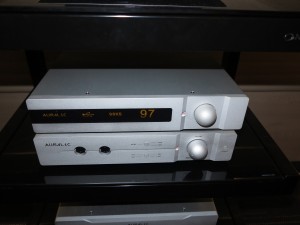Articles

The same kind of GaN technology that powers these powerful USB chargers is entering another class of electronics
GaN Technology in Audio Power Amplification | audioXpress
Previous coverage on GaN technology
Belkin joins the GaN bus with two highly-compact USB PD wall chargers
My Comments
Gallium Nitride is a relatively new semiconductor material that is being seen as “today’s silicon”. At the moment, it has been used in various optoelectronics applications like blue, white, green or ultraviolet LEDs and blue and green laser diodes.
As well, it has seen a lot of traction within power electronics use cases like power supplies, inverters and battery chargers. This has been leading to some small powerful USB-C battery chargers and multi-output charging bars. As well, this technology is helping with decarbonisation thanks to its use with solar panels, battery storage systems and electric vehicles. What has driven its use in this field is how powerful the GaN semiconductors are and the fact that there aren’t heat issues with these semiconductors, this allowing for small designs for powerful power-supply circuits.
But over the last two years, some work has taken place with implementing GaN technology within the audio amplifier space. This is similar to power-supply design but is to amplify a variable-frequency signal representing sound in order to drive a loudspeaker. Here it’s about assuring that the sound is amplified in a manner to assure its clarity and intelligibility.
GaN Systems has showcased an audio amplifier design that works at 250 watts per channel for a 4-ohm load with a very low total harmonic distortion of below 0.01% across 20 Hz to 20 kHz. This Class D amplifier circuit has been rated to perform close to a Class A amplifier circuit which represents the pinnacle for hi-fi audio amplification using solid-state technology.
What could this mean for audio equipment design?
I see this like how silicon technology impacted audio equipment design through the 1970s.
For example, amplifiers started to acquire power output ratings of at least two figures per channel with specifications that represented an increasingly-clean sound, which led to a requirement to re-engineer loudspeakers for stronger signals. These amplifiers were more tolerant of how the speakers were wired to them thus opening the pathway to multiroom audio or advanced speaker wiring approaches. This was infact a driver for the Receiver Wars of the 1970s with the goal to see who could offer the most powerful stereo receiver that yielded the cleanest sound.
There was also the ability to do away with output transformers which was a boon for a clean hi-fi sound and for mobile and portable use cases. It was also easier to design portable equipment for increased power efficiency which allowed for longer battery runtimes with stronger clearer sound. It also led to a strong effort towards highly-compact hi-fi systems be they integrated systems with many programme sources on the same chassis or small compact component systems.

Smart speakers and Bluetooth speakers are expected to benefit from GaN audio-amplification technology to assure that clean powerful sound.
Most likely I would see increasingly capable active-speaker designs like smart speakers or Bluetooth speakers appear on the market which are about a clearer stronger sound that what occurred previously. They would also have a neat design even though they have a higher power output due to very little reliance on heatsinks and other thermal-mitigation designs.
As well, manufacturers could get away with designing sophisticated amplifier and speaker setups yet keep the amplifiers in these setups compact. This would benefit multichannel and spatial audio or sophisticated designs with separately-amplified speaker drivers such as “active subwoofer” or “biamplification”.
It would also impact “built-in” audio designs like automotive or marine audio. That also extends to TVs, computer monitors and similar devices with built-in speakers. This is because there would be powerful high-quality amplifiers that can be integrated in these installations without having to worry about heat buildup.
Like what happened when silicon semiconductors came about, battery-operated devices will gain a performance and efficiency boost. Welcome to longer battery runtimes or significant improvement in sound quality out of those Bluetooth speakers or portable digital radios for example.
GaN semiconductor technology entering the audio-amplification space is demonstrating the fact that this a significant step towards it becoming the “new silicon” for electronics design.


